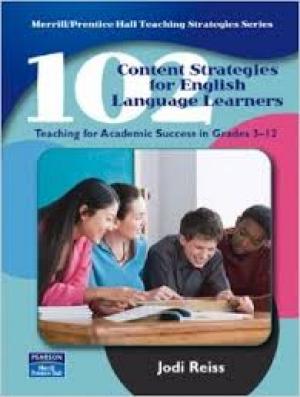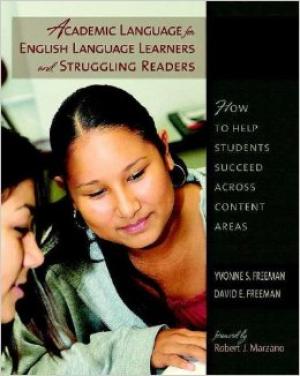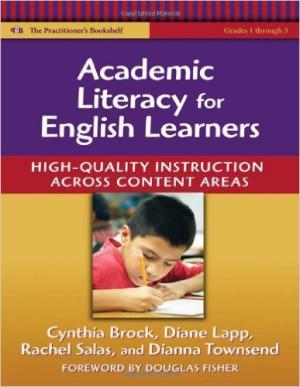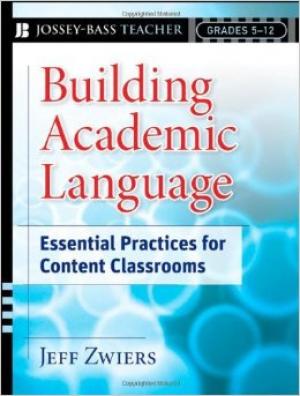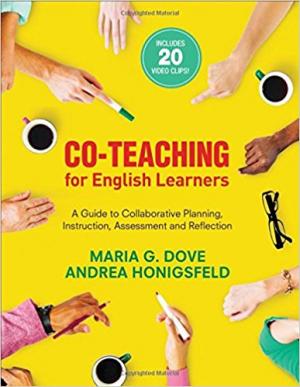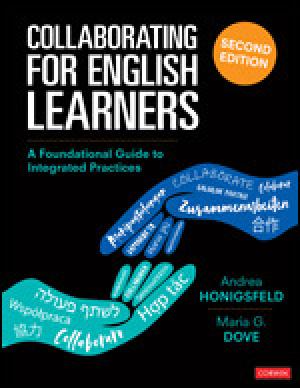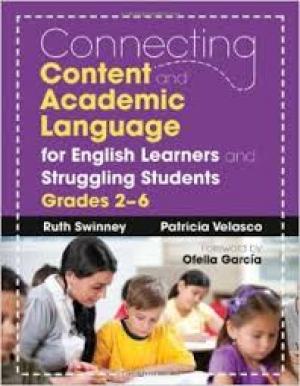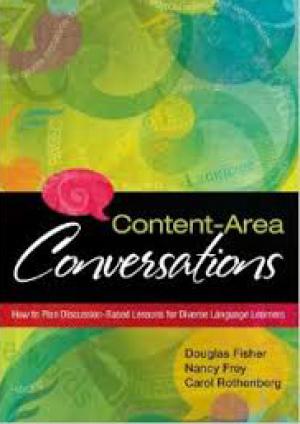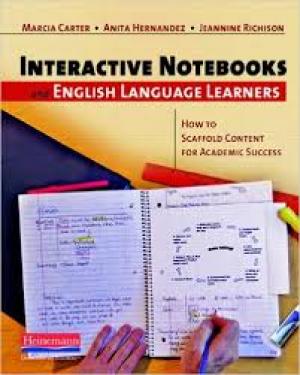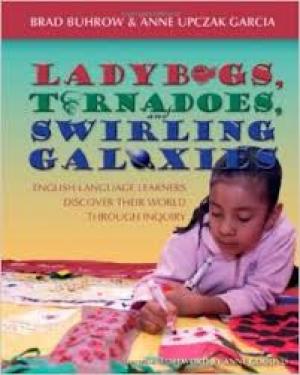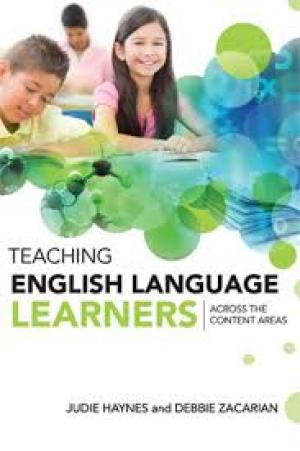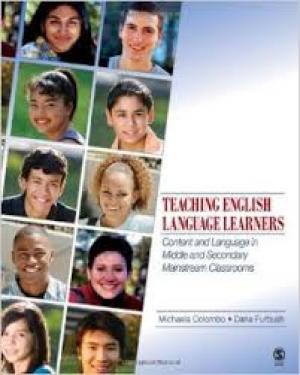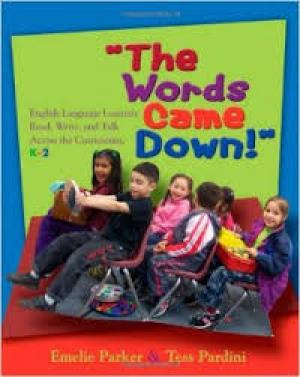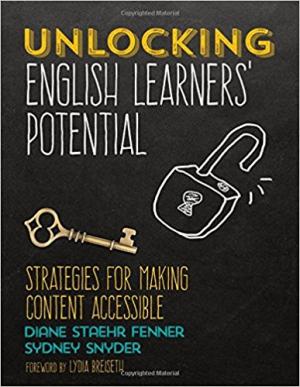Content Instruction for ELLs
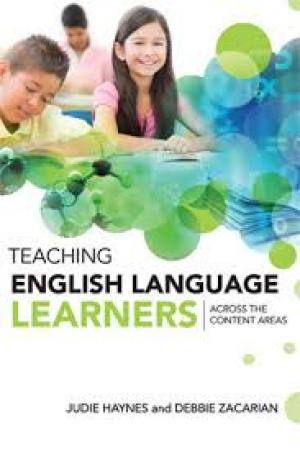
These books offer strategies for ELL content instruction, including guidelines for vocabulary, homework, and assessment.
Jump to navigation Jump to Content

These books offer strategies for ELL content instruction, including guidelines for vocabulary, homework, and assessment.
After a brief exploration of theoretical and cultural considerations when teaching content to ELLs, Jodi Reiss outlines 102 strategies that can be used in grades 3-12. Content and ELL educators alike will benefit from her approach of combining a conceptual framework with practical examples, as well as her advice on selecting core concepts when reviewing content standards.
Product Description: Authors Jeff Zwiers and Marie Crawford have identified five core communication skills to help students hold productive academic conversations across content areas. These skills include: elaborating and clarifying, supporting ideas with evidence, building on and/or challenging ideas, paraphrasing, and synthesizing.
Product Description: The Freemans provide the information busy secondary teachers need to work effectively with English learners and struggling readers. They examine academic language at different levels: the text level, the paragraph level, the sentence level, and the word level. For each, they provide examples of academic language and specific strategies teachers can use as they teach language arts, science, math, and social studies.
Product Description: The authors of this practical guide delve into the social, cultural, and linguistic backgrounds of America s school children to discover how today s teachers can tap into their students strengths and background knowledge. Each chapter provides examples from real classrooms where first- through fifth-grade teachers are working to serve students from a wide variety of backgrounds. This powerful guide shows how to integrate best practices across the content areas of science, mathematics, and social studies, while fostering high levels of academic proficiency.
Product Description: Jeff Zwiers explains the functions and features of academic language that every teacher (language arts, history, math, & science teachers, etc.) should know for supporting academic reading, writing, and discussion. Major topics and themes include how language-building activities (discussions, small groups, etc.) can support content understanding; how we can build on students' diverse ways of understanding, learning, and communicating about the world; and how we can more effectively model and scaffold academic language in our teaching and assessment.
EL authorities Maria Dove and Andrea Honigsfeld take ESL teachers and their general education colleagues step-by-step through building a successful collaboration―or improving an existing one. And since no teaching team is exactly alike, you'll find seven collaborative models to choose from. Features include:
• In-depth profiles of the seven models
• Advantages and challenges of each model
• Clear explanations of each teacher’s role
More than a decade of implementation has generated new insights into what exemplary teacher collaboration looks like, which essential frameworks must be established, and how integrated approaches to ELD services benefit all stakeholders. Essentially a roadmap to the many different ways we can all work together, this second edition of Collaborating for English Learners features:
While many educators may understand why academic language is important, they may wonder how to teach it more explicitly and effectively. In this hands-on guide, experts Ruth Swinney and Patricia Velasco offer a number of strategies and approaches to help ELLs and struggling learners master the language necessary to access grade-level curriculum and to succeed in related reading, writing, and speaking tasks.
Product Description: This practical, hands-on guide outlines strategies for creating and managing environments that spur sophisticated levels of student communication, both oral and written. Paying special attention to the needs of ELLs and using numerous classroom scenarios, the authors detail steps for designing lessons that spark student talk; describe easy-to-use assessments for all grade levels; provide rubrics, worksheets, sentence frames, and other imaginative tools that encourage academic communication; and offer guiding questions to help teachers plan instruction.
Writing can be a vehicle for expanding ELLs' learning, especially if the format is an interactive notebook. The format is similar to that of a double-entry journal — students take notes or post handouts on the right-hand pages and use the left-hand pages for their own reactions to the posted material. This allows ELLs to engage and interact with content material in a way that promotes understanding and helps build academic vocabulary. Detailed instructions and examples included.
Brad Buhrow and Anne Garcia are primary teachers who have blended comprehension instruction and ELL best practices to explore inquiry as a literacy pathway for English language learners. The book is full of photographs of student artwork, and the authors provide explicit detail on the process they use as they move step-by-step with students from personal narrative through the independent inquiry process. Appendices in Spanish and English included.
Judie Haynes (creator of everythingESL.net) and Dr. Debbie Zacarian offers hands-on, practical strategies that educators can implement immediately to provide effective content instruction for ELLs. Chapters focus on topics such as creating engaging lesson plans, successful small group work activities, content vocabulary instruction, and strategies focused on writing, homework, and assessment. Appendices include guided terms for composing language objectives and a lesson modification worksheet that can be used to adapt lesson plans for ELL instruction.
This comprehensive discussion of content instruction for ELLs provides detailed information on planning and implementing effective instruction in math, science, social studies, and language arts. The authors include a thorough treatment of topics such as second language acquisition, academic literacy, and building academic language within the context of the content area classroom. The second part of the text devotes a separate chapter to each of the four content areas discussed, complete with lesson plans prepared by master teachers and mini-lessons for language development.
Beginning with designing a classroom that welcomes students and creates appropriate conditions for learning, the authors go on to detail a workshop format for reading, writing and content-area studies. Oral language is emphasized in a continuum from teacher modeling to student-to-student communication. This book emphasizes that when children's attempts at communicating are accepted and celebrated, they will learn to communicate with each other comfortably and spontaneously wherever they may be.
Content teachers and ESOL teachers, take special note: if you’re looking for a single resource to help your English learners meet the same challenging content standards as their English-proficient peers, your search is complete. Just dip into this toolbox of strategies, examples, templates, and activities from EL authorities Diane Staehr Fenner and Sydney Snyder, which includes tips on:
See more great related resources and videos in our Multicultural Literature section!

